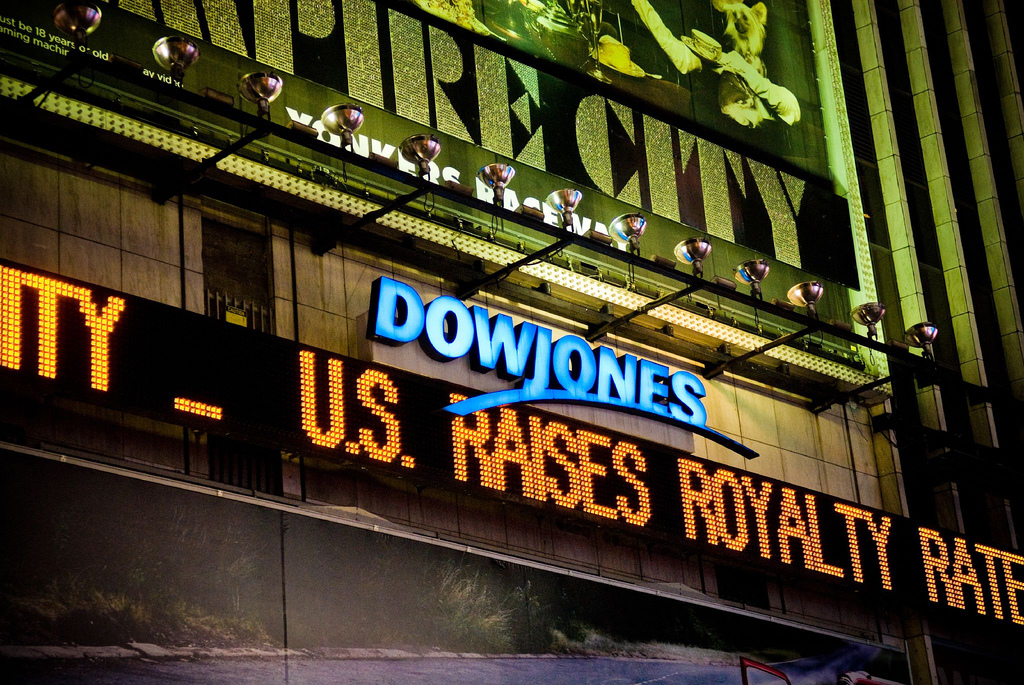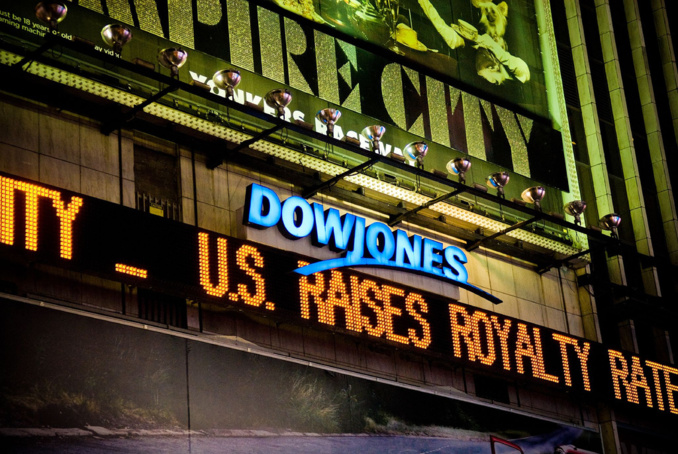At the same time, their role has increased dramatically in recent years. The index-makers have become, without exaggeration, new leaders in the financial market: they determine how investors place their money.
The three largest companies - FTSE Russell, MSCI and S&P Dow Jones Indices - are the main index-makers. The amount of money they affect is truly impressive. S&P Dow Jones indices cover assets worth $ 4.2 trillion in total (they are invested in "passive" funds), and only $ 3 trillion are targeted at the S&P 500. Also, another $ 7.5 trillion in actively managed assets use the indexes as benchmarks.
Two other suppliers of indexes have an impact on similar gigantic amounts: $ 15 trillion in active and passive funds relate to the FTSE indices and $ 11 trillion account for MSCI, British The Economist writes.
Meanwhile, the index makers believe that they are not as influential as they seem. Alex Matturri, CEO of S&P Dow Jones, says that although the assets in the ETF have reached $ 4 trillion around the world, this is only "a small part of the global investment universe" (estimated at about $ 300 trillion).
Matturri also points out at transparency and a "rule-based approach" to formation of an index and management. Any major changes are made only after consulting with the market.
In addition, as President of FTSE Russell Mark Makepeace states, index-making remains a very competitive business. Some small vendors, such as Morningstar, provide information on most of their indexes.
"Big Three" charges both for access to information, and for the use of their indices by passive funds.
Boundaries of the activities of these companies are defined by regulation. Starting in January 2018, European index makers will have to follow the Benchmarks Regulation, which includes an annual external audit for "critical" benchmarks and direct supervision by the EU regulator.
Despite statements about objectivity and transparency of its rules, many of the index makers’ decisions are clearly subjective. Take, for example, the June decision of MSCI to include Chinese stocks in its index of stock markets of developing countries. The shares of mainland China were previously excluded from it due to opacity of the capital market in the Middle Kingdom and limited access to foreign investors.
The impact of index-makers has increased due to the growth of passive investment. In America, for example, three-tenths of assets are now located in passive funds. And although some small competitors manage to survive, the index sector is becoming more concentrated. Many banks withdrew from the business of the bond index, having sold their brands. So, Bloomberg acquired the Barclays indices last year, and FTSE Russell almost completed the purchase of Citigroup indices.
The dominant position of index-makers can also be explained by the fact that they constitute the most recognized benchmarks of the market. Yet, they claim they are ready to take part in development of new, completely different indices, including for other asset classes. For example, several new indexes begin to offer reliable benchmarks for such opaque asset classes as shares of closed joint-stock companies. And Kensho company composes a stock exchange index in such fashionable areas as nanotechnology and drones.
Some new products are not similar to traditional indices. STRIDE index - S&P Dow Jones’ new index - covers different classes of assets, whose weight varies with time. It is clearly in demand by workers of pre-retirement age.
A number of indices are on the verge of absurdity. Last week, S&P announced an index of companies black-listed by the Indian government.
As long as indices help the market, the role of index-makers will grow. Together with this, a critical analysis of their activities will also intensify.
source: economist.com
The three largest companies - FTSE Russell, MSCI and S&P Dow Jones Indices - are the main index-makers. The amount of money they affect is truly impressive. S&P Dow Jones indices cover assets worth $ 4.2 trillion in total (they are invested in "passive" funds), and only $ 3 trillion are targeted at the S&P 500. Also, another $ 7.5 trillion in actively managed assets use the indexes as benchmarks.
Two other suppliers of indexes have an impact on similar gigantic amounts: $ 15 trillion in active and passive funds relate to the FTSE indices and $ 11 trillion account for MSCI, British The Economist writes.
Meanwhile, the index makers believe that they are not as influential as they seem. Alex Matturri, CEO of S&P Dow Jones, says that although the assets in the ETF have reached $ 4 trillion around the world, this is only "a small part of the global investment universe" (estimated at about $ 300 trillion).
Matturri also points out at transparency and a "rule-based approach" to formation of an index and management. Any major changes are made only after consulting with the market.
In addition, as President of FTSE Russell Mark Makepeace states, index-making remains a very competitive business. Some small vendors, such as Morningstar, provide information on most of their indexes.
"Big Three" charges both for access to information, and for the use of their indices by passive funds.
Boundaries of the activities of these companies are defined by regulation. Starting in January 2018, European index makers will have to follow the Benchmarks Regulation, which includes an annual external audit for "critical" benchmarks and direct supervision by the EU regulator.
Despite statements about objectivity and transparency of its rules, many of the index makers’ decisions are clearly subjective. Take, for example, the June decision of MSCI to include Chinese stocks in its index of stock markets of developing countries. The shares of mainland China were previously excluded from it due to opacity of the capital market in the Middle Kingdom and limited access to foreign investors.
The impact of index-makers has increased due to the growth of passive investment. In America, for example, three-tenths of assets are now located in passive funds. And although some small competitors manage to survive, the index sector is becoming more concentrated. Many banks withdrew from the business of the bond index, having sold their brands. So, Bloomberg acquired the Barclays indices last year, and FTSE Russell almost completed the purchase of Citigroup indices.
The dominant position of index-makers can also be explained by the fact that they constitute the most recognized benchmarks of the market. Yet, they claim they are ready to take part in development of new, completely different indices, including for other asset classes. For example, several new indexes begin to offer reliable benchmarks for such opaque asset classes as shares of closed joint-stock companies. And Kensho company composes a stock exchange index in such fashionable areas as nanotechnology and drones.
Some new products are not similar to traditional indices. STRIDE index - S&P Dow Jones’ new index - covers different classes of assets, whose weight varies with time. It is clearly in demand by workers of pre-retirement age.
A number of indices are on the verge of absurdity. Last week, S&P announced an index of companies black-listed by the Indian government.
As long as indices help the market, the role of index-makers will grow. Together with this, a critical analysis of their activities will also intensify.
source: economist.com



















